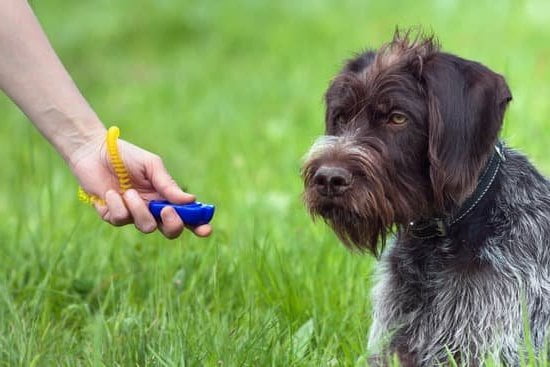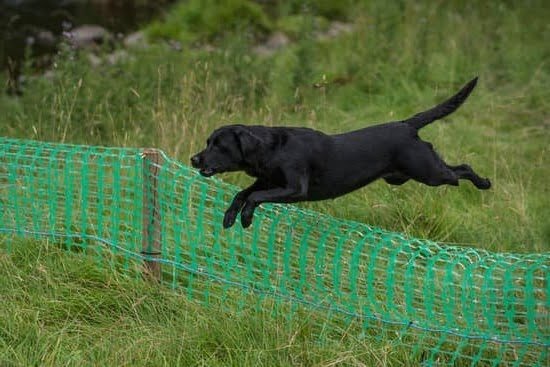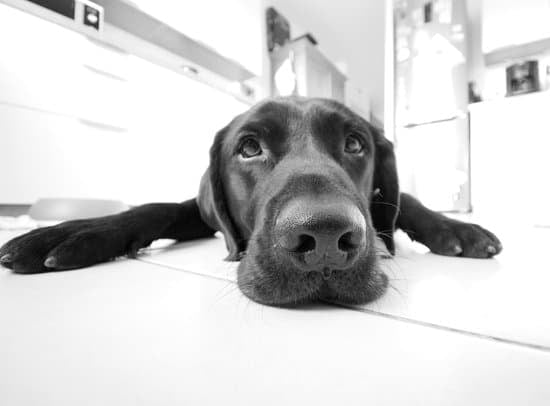How do you know if your dog is potty trained? Potty training is an essential aspect of a dog’s development, ensuring a clean and healthy environment for both the pet and their owners. Understanding the signs that indicate whether your dog is potty trained, establishing a routine, and addressing setbacks are all crucial elements in this process.
Potty training is an important milestone in a dog’s life, as it not only prevents accidents indoors but also strengthens the bond between the pet and their owner. By recognizing the signs of potty training success and implementing positive reinforcement techniques, owners can effectively train their dogs to relieve themselves in appropriate locations.
One key aspect of potty training involves establishing a routine, which helps reinforce good habits in dogs. Consistency is also vital in this process, as it helps instill the desired behavior. Additionally, understanding how dogs communicate their need to go outside and addressing any accidents that may occur during the training period are essential components of successful potty training.
Signs That Your Dog Is Potty Trained
Potty training is an essential part of raising a well-behaved and happy dog. It not only helps to keep your home clean and odor-free but also strengthens the bond between you and your furry friend. One of the key questions that arise during the potty training process is: “How do you know if your dog is potty trained?” Observing their behavior and habits is crucial in determining whether your dog has successfully learned to do their business outside.
Here are some signs that indicate your dog is potty trained:
- They consistently go to the bathroom outside: A potty trained dog will consistently go to the bathroom outside in their designated spot. This shows that they understand this is the appropriate place to relieve themselves.
- They communicate their need to go outside: Potty trained dogs often exhibit behavior that communicates their need to go outside, such as standing by the door, whining, or pacing. This shows that they have learned how to signal when they need a bathroom break.
- They have fewer accidents indoors: While occasional accidents can happen, a potty trained dog will significantly reduce the number of indoor accidents as they have learned to hold it until they are taken outside.
Establishing a routine for potty training is crucial for success. This routine includes regular feeding times, consistent potty breaks, and positive reinforcement for going in the right spot. By observing your dog’s behavior and habits, you can determine whether they have successfully grasped the concept of potty training.
Consistency in both routine and positive reinforcement plays a vital role in successful potty training. Dogs thrive on routine, so maintaining a consistent schedule for meals, bathroom breaks, and walks will help reinforce good potty habits.
Additionally, using positive reinforcement such as praise, treats, or toys when your dog goes to the bathroom outside will motivate them to continue this behavior. By being observant of your dog’s progress and providing consistent reinforcement, you can ensure that they become fully potty trained.
Establishing a Routine for Potty Training
Potty training a dog is an essential part of their overall training and development. Establishing a routine for potty training is crucial for success in this process. Dogs thrive on routine, and having a consistent schedule helps them understand when and where they should go to the bathroom. Here are some key steps to consider when establishing a routine for potty training:
- Designate specific potty areas: Whether it’s a patch of grass in the yard or a particular spot on your daily walking route, having designated potty areas helps your dog understand where they should do their business.
- Establish regular potty times: Take your dog out first thing in the morning, after meals, before bedtime, and several times throughout the day. Consistency in these times will help them develop a reliable bathroom schedule.
- Use cues and commands: When you take your dog to their designated potty area, use consistent cues or commands to signal that it’s time to go. This could be a phrase like “go potty” or a specific hand gesture.
Consistency is key when it comes to establishing a routine for potty training. Every member of the household should be on board with the schedule and expectations for taking the dog outside. Additionally, keeping track of your dog’s eating and drinking habits can also help you anticipate when they will need to go outside.
Remember that every dog is different, so it may take some trial and error to find the routine that works best for your pet. By being patient and attentive to your dog’s needs, you can set them up for success in their potty training journey.
Consistency Is Key
When it comes to potty training your dog, consistency is key to success. One essential aspect of this consistency is the use of positive reinforcement. Positive reinforcement involves rewarding your dog for exhibiting the desired behavior, in this case, going to the bathroom outside. This method has been proven to be effective in teaching dogs where and when it is appropriate to relieve themselves.
Positive reinforcement can take various forms, including verbal praise, treats, or playtime. When your dog goes potty outside, make sure to immediately praise them with enthusiasm and give them a small treat as a reward. Over time, they will associate going potty outside with receiving positive attention and rewards, which will motivate them to continue the behavior.
It’s important to note that while positive reinforcement is crucial in potty training, punishment for accidents indoors should be avoided. Punishing your dog for having accidents can create anxiety or fear around going potty, making the training process more challenging. Instead, focus on rewarding the desired behavior and being patient and understanding when accidents do occur.
According to experts at the American Kennel Club (AKC), consistency with positive reinforcement can lead to significant progress in potty training within a few weeks. However, every dog is different, so it’s important to be patient as you work with your furry companion. Remember that establishing a routine and consistently using positive reinforcement are key components of successful potty training.
| Positive Reinforcement Methods | Effectiveness |
|---|---|
| Verbal praise | Effective in reinforcing good behavior |
| Treats | Motivates dogs to repeat desired actions |
| Playtime | Provides positive interaction and reinforces good behavior |
Understanding Your Dog’s Cues
Potty training your dog is a crucial part of pet ownership, and understanding your dog’s cues is essential in this process. One of the most common questions among dog owners is “how do you know if your dog is potty trained?” The answer lies in recognizing the signs and signals that indicate your dog needs to go outside.
One of the key signs that your dog is potty trained is when they consistently communicate their need to go outside. This can be through various cues such as whining, pacing, scratching at the door, or even coming to you and making eye contact. Paying attention to these behaviors and responding promptly can reinforce their understanding of the potty training routine.
Additionally, some dogs may show a preference for a specific spot when they need to relieve themselves. They may start heading towards the door or waiting by their leash, indicating that they are ready for their potty break. Understanding these signals and effectively addressing them plays a vital role in confirming that your dog is successfully potty trained.
| Signs of Potty Training | Examples |
|---|---|
| Whining | Your dog whines when it needs to go outside. |
| Pacing | Your dog starts pacing back and forth near the door. |
| Specific Spot Preference | Your dog consistently heads to a particular area when it needs to relieve itself. |
Understanding your dog’s cues can help prevent accidents in the house and strengthen the bond between you and your pet. It’s important to be patient and consistent in reinforcing these behaviors to ensure successful potty training. By being attentive to these signals, you can confidently determine whether your dog is indeed potty trained.
Addressing Accidents
Understanding the Importance of Accidents
Accidents are a natural part of the potty training process for dogs. It’s crucial to understand that setbacks and accidents will happen, especially during the early stages of training.
Dogs don’t have the same level of control over their bodily functions as humans, so it’s important to approach accidents with patience and understanding. Punishing or scolding your dog for having an accident can actually hinder the potty training process and lead to anxiety or fearfulness in your pet.
Immediate Response to Accidents
When accidents do occur, it’s important to react in a calm and collected manner. If you catch your dog in the act indoors, interrupt them with a firm “no” and then immediately take them outside to finish their business. This helps them associate outdoor spaces with pottying, reinforcing good habits. Use an enzymatic cleaner to thoroughly clean up any accidents indoors, as this will help eliminate odors that may attract your dog back to the same spot.
Adjusting Your Training Approach
If accidents become frequent or if your dog seems to be struggling with potty training, it may be necessary to reevaluate your training approach. Consider whether you are providing enough opportunities for regular bathroom breaks, if your dog is receiving enough positive reinforcement for good behavior, and if there are any underlying health issues that could be contributing to accidents. Adjusting these factors can help address setbacks and get back on track with successful potty training.
Through careful management of accidents and a patient approach, you can help your dog develop strong potty training habits that will benefit both them and you in the long run.
How Long Does It Take to Potty Train a Dog
Potty training a dog is an essential part of pet ownership, as it helps to establish good habits and maintain a clean and healthy living environment for both the dog and their owner. However, one common question that many dog owners have is: how long does it take to potty train a dog? Managing expectations and timelines is crucial when it comes to potty training, as every dog is different and may progress at their own pace.
The timeline for potty training a dog can vary based on factors such as the breed, age, and individual temperament of the dog. Generally, smaller breeds tend to have smaller bladders and may need more frequent bathroom breaks, while younger dogs may take longer to grasp the concept of potty training. It’s important for dog owners to understand that patience is key when it comes to potty training, and setting realistic expectations can help alleviate frustration during the process.
On average, it can take anywhere from a few weeks to several months to fully potty train a dog. Consistency in training methods and schedules is crucial in helping the dog understand what is expected of them. Some dogs may catch on quickly and show signs of being fully potty trained within a few weeks, while others may require more time and effort.
Understanding that every dog has their own learning pace can help manage expectations during the potty training process. It’s important for dog owners to remain patient, consistent, and supportive throughout the training period. By taking the time to understand their individual pet’s needs and progress, owners can set realistic timelines for potty training success.
Special Considerations for Puppies
Puppies require a different approach to potty training compared to adult dogs. Their young age and developing bladder control make the process unique and often more challenging. However, with patience and consistency, it is possible to successfully potty train a puppy.
Start Early
It is essential to start potty training your puppy as early as possible. As soon as you bring your new furry friend home, begin establishing a routine for bathroom breaks. Puppies have smaller bladders and need to eliminate more frequently, so be prepared for more frequent trips outside.
Use Positive Reinforcement
Just like with adult dogs, positive reinforcement is key when potty training a puppy. Use treats, praise, and rewards to encourage good behavior and reinforce the idea that going potty outside is the desired behavior. This will help them understand what is expected of them and make the process more enjoyable for both you and your puppy.
Puppy-Proofing Your Home
Accidents are inevitable when potty training a puppy, so it’s important to puppy-proof your home. Keep an eye on your puppy at all times or confine them to a small area using baby gates or a crate when you can’t supervise them. This will help prevent accidents inside the house and encourage them to hold their bladder until they go outside.
Potty training a puppy requires time, patience, and consistency. By understanding their unique needs and providing the proper guidance, you can set them up for success in their potty training journey. Remember that every puppy is different, so be patient and celebrate each milestone along the way as they learn this important skill.
Conclusion
In conclusion, potty training is an essential aspect of ensuring a harmonious relationship with your dog. By understanding the signs that indicate your dog is potty trained, establishing a routine, and being consistent with positive reinforcement, you can successfully achieve this milestone. It is important to pay attention to your dog’s cues and react accordingly, as well as be prepared to handle setbacks with patience and understanding.
Successfully potty training your dog not only leads to a cleaner home environment but also strengthens the bond between you and your furry companion. The trust and communication that develop through the potty training process create a foundation for a strong and loving relationship. Once you have achieved success in potty training, it’s important to celebrate this achievement as a significant milestone in your dog’s development and your journey together.
It’s natural for pet owners to wonder “how do you know if your dog is potty trained,” but with dedication, patience, and the right approach, you will undoubtedly see progress over time. Ultimately, the key to successful potty training lies in understanding your dog’s behavior, being consistent in your approach, and celebrating each step of progress along the way.
Frequently Asked Questions
How Do You Know When Dog Is Potty Trained?
You can tell if a dog is potty trained when they consistently go to the bathroom in the designated spot, whether it’s outside or on a pee pad. They will also show signs of needing to go, like scratching at the door or whining.
How Long Until a Dog Is Considered Potty Trained?
The time it takes for a dog to be considered potty trained can vary depending on the breed, age, and individual dog. On average, it can take anywhere from 4 to 6 months for a dog to be fully potty trained. Consistent training and positive reinforcement are essential in speeding up this process.
How Do I Know My Dog Is Housebroken?
Once your dog is housebroken, they will start showing signs of understanding where they should go to the bathroom. This includes waiting by the door to be let out, signaling when they need to go, or going directly to their designated bathroom area without any accidents inside the house.
Keep an eye out for these behaviors as indicators of successful housebreaking.

Welcome to the blog! I am a professional dog trainer and have been working with dogs for many years. In this blog, I will be discussing various topics related to dog training, including tips, tricks, and advice. I hope you find this information helpful and informative. Thanks for reading!





